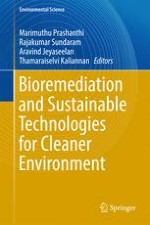2017 | OriginalPaper | Chapter
Prospecting Multiple Enzyme Systems of Mangrove Fungi for Dye Decolourization Potential
Authors : Nathan Vinod Kumar, K. Subha Rajam, Mary Esther Rani, R. Gunaseeli, N. D. Kannan
Published in: Bioremediation and Sustainable Technologies for Cleaner Environment
Publisher: Springer International Publishing
Activate our intelligent search to find suitable subject content or patents.
Select sections of text to find matching patents with Artificial Intelligence. powered by
Select sections of text to find additional relevant content using AI-assisted search. powered by
